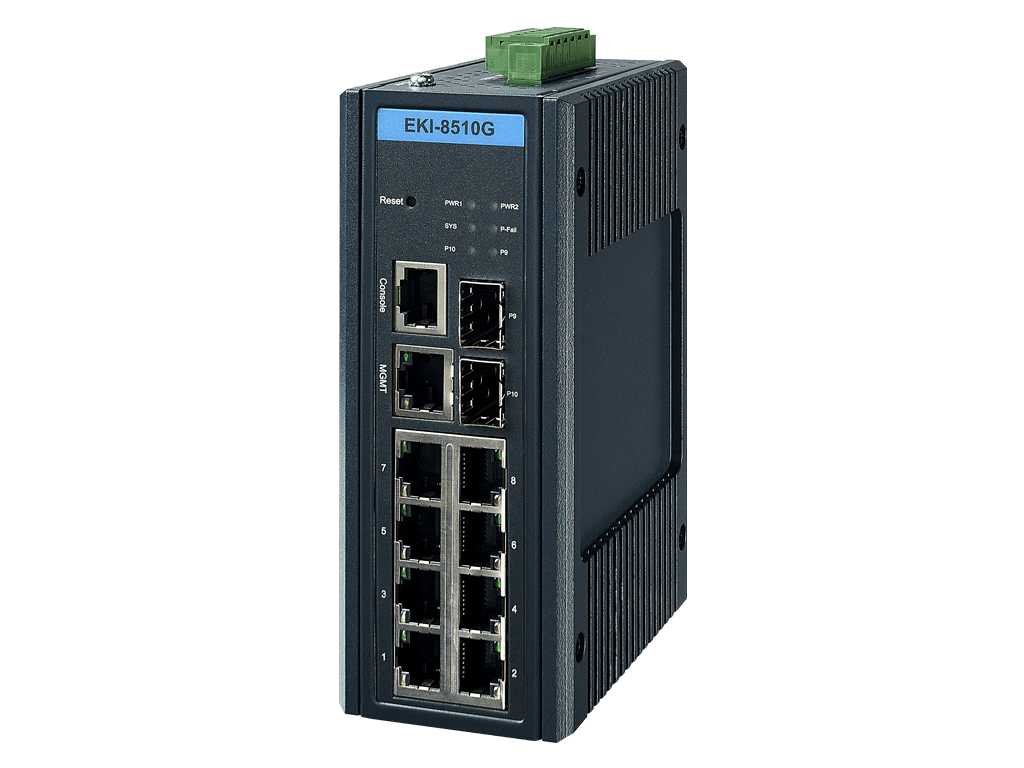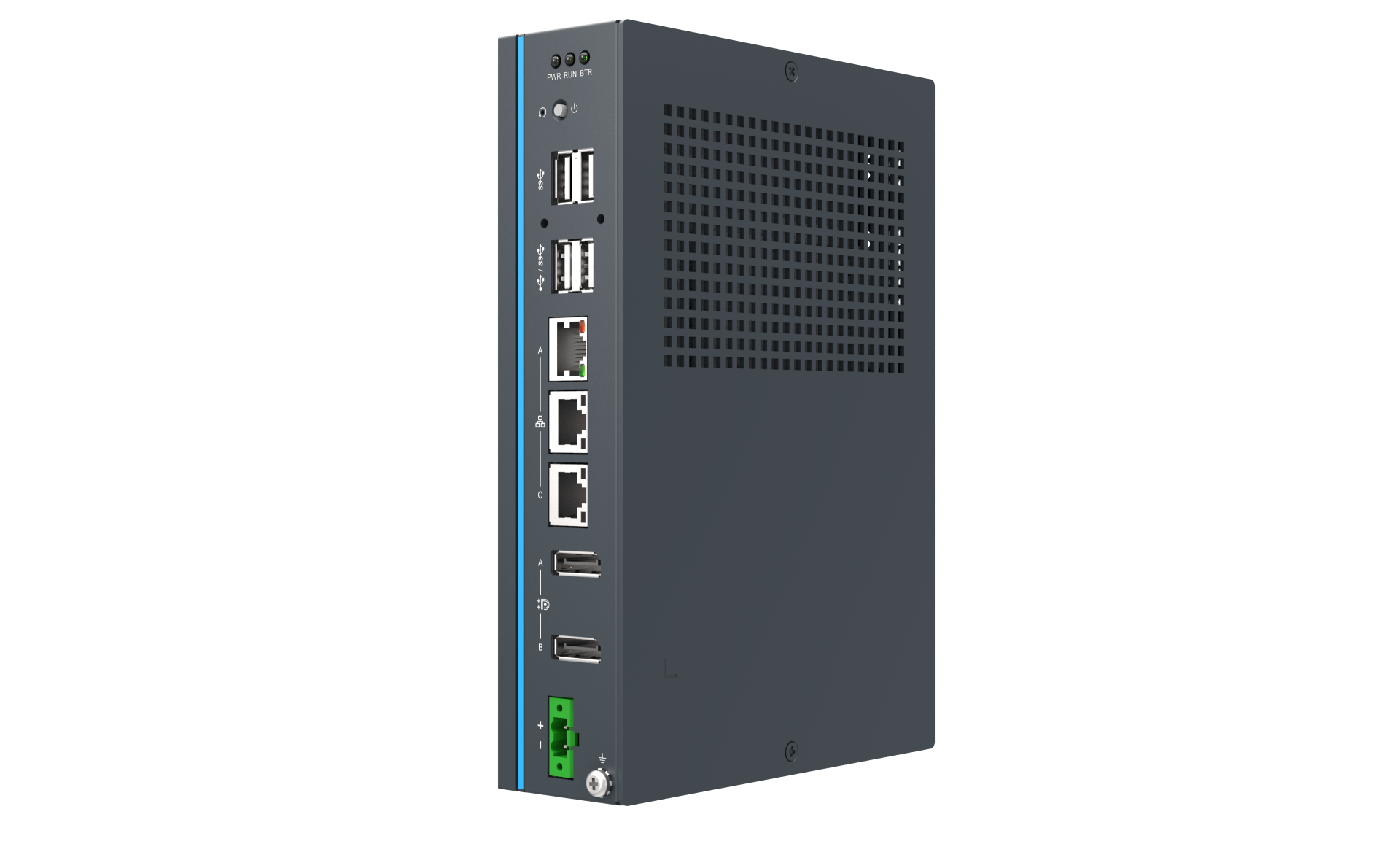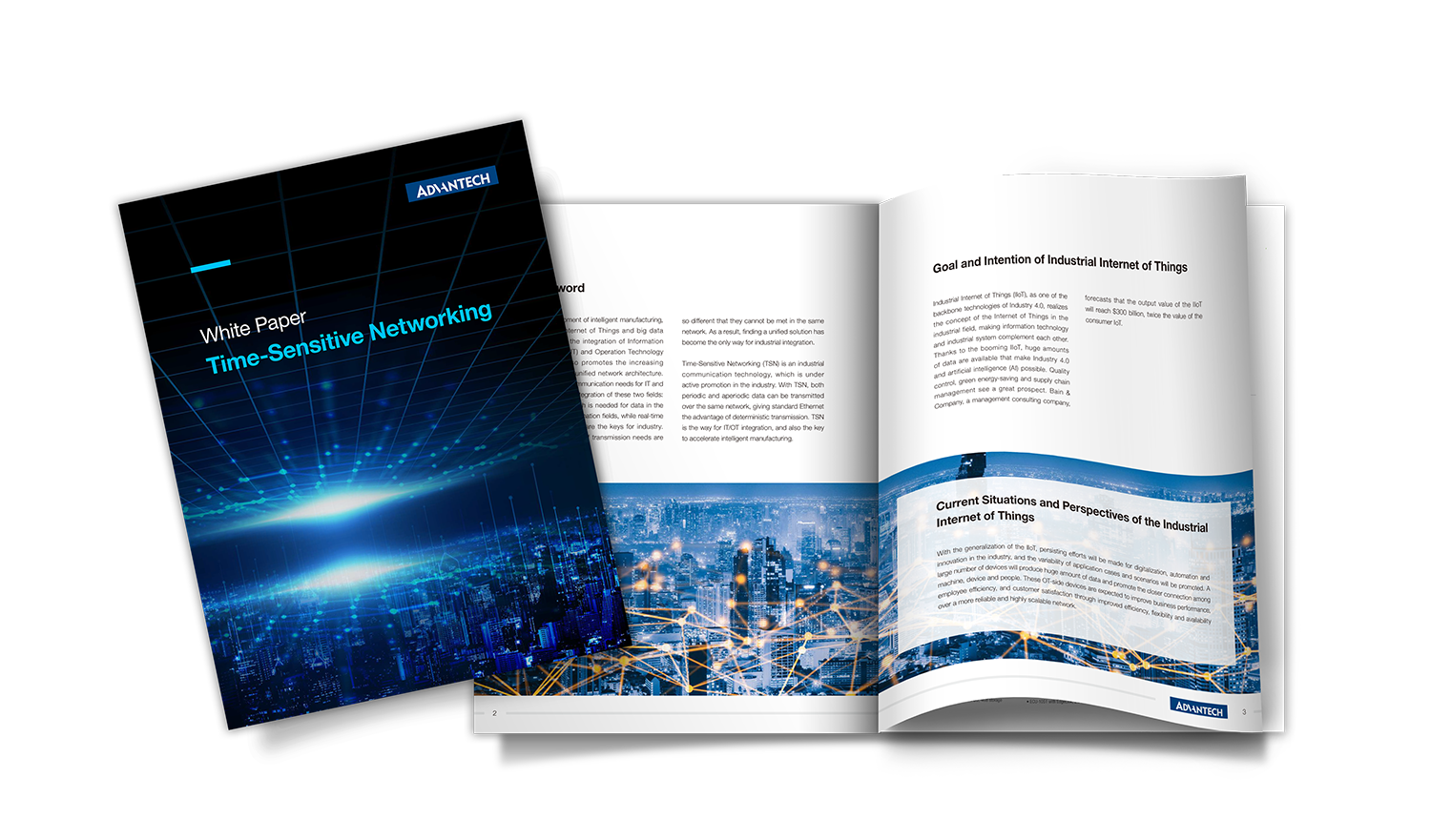Time-Sensitive-Networking (TSN)とは?
TSNテクノロジーの重要性
Overview of IEEE 802.1 Used in TSN
TSN(Time-Sensitive-Networking)は新しい名前ですが、新しい技術ではありません。一連のイーサネットのサブスタンダードな定義で構成されたIEEE 802.1 TSNタスクフォースであり、ビデオやオーディオデータの分野から工業や自動車製造の分野にまで及ぶ技術です。当初、TSNは「AVB」と呼ばれるオーディオ・ビデオ分野での要望から発展したものでした。AVBは、広帯域・高リアルタイム性が要求されるオーディオ・ビデオネットワークにおいて、高品質なオーディオ・ビデオを効率的に伝送することができます。
2006年、IEEE 802.1ワーキンググループは、「AVB Audio and Video Bridging Task Force」を設立し、オーディオ・ビデオネットワークにおけるデータのリアルタイム同期伝送の障害に対処することを目的としました。その6年後の2012年、AVBタスクフォースは、時間確定イーサネットのアプリケーション要件と範囲を拡大し、TSNタスクフォースと名称を変更しました。
前述したように、TSNはイーサネットをベースとした新世代ネットワーク規格として、時刻同期と遅延保証の機能を備えている。産業分野では、制御レベルから運用レベルまでの一連の接続を実現します。TSNはIEEEが策定した国際規格でもあり、将来的には産業用通信の第一候補となると見込まれています。
| 規格名 | 概要 |
|---|---|
| IEEE 802.1AS-Rev | Timing and synchronization for time sensitive applications |
| IEEE 802.1Qbu | Frame preemption |
| IEEE 802.1Qbv | Enhancements for scheduled traffic |
| IEEE 802.1Qca | Path control and reservation |
| IEEE 802.1CB | Frame replication and elimination for reliability |
| IEEE 802.1Qcc | Stream reservation protocol enhancements and performance improvements |
| IEEE 802.1Qch | Cyclic queuing and forwarding |
| IEEE 802.1Qci | Pre-stream filtering and policing |
| IEEE 802.1CM | Time-sensitive networking for fronthaul |
| IEEE 802.3br | Interspersing express traffic |
| IEEE802.1Qcr | Bridges and bridged networks amendments: asynchronous traffic shaping |
OT/ITの統合
インテリジェントな製造、産業IoT、ビッグデータの発展は、インフォメーション・テクノロジー(IT)とオペレーション・テクノロジー(OT)の統合を加速させるとともに、ユニファイド・ネットワーク・アーキテクチャーへの要求も高めています。インターネットや情報分野ではデータに広い帯域が必要とされ、一方、産業分野ではリアルタイム性と確定性が鍵となります。インターネットや情報分野のデータにはより広い帯域が必要ですが、産業分野ではリアルタイム性と決定性が重要です。その結果、統一されたソリューションを見つけることが、産業界の統合のための唯一の方法となったのです。
TSN(Time-Sensitive Networking)は、産業界で積極的に推進されている産業用通信技術です。TSNでは、周期的なデータと非周期的なデータの両方を同じネットワーク上で伝送することができ、標準的なイーサネットに決定論的な伝送の利点を与えます。TSNは、IT/OT統合のための手段であり、インテリジェントな製造を加速させる鍵でもあります。
産業用IoTの目的と目指すゴール
産業用IoT(IIoT)は、インダストリー4.0のバックボーン技術の一つであり、産業分野におけるモノのインターネットのコンセプトを実現し、情報技術と産業システムを相互に補完するものです。を実現し、情報技術と産業システムを相互に補完するものです。IIoTのおかげで、インダストリー4.0や人工知能(AI)を可能にする膨大な量のデータが得られるようになりました。品質 品質管理、グリーン・エネルギーの節約、サプライチェーン・マネジメントなどに大きな展望が開けています。経営コンサルティング会社のベイン・アンド・カンパニーは、IIoTのアウトプット価値が3000億ドルに達し、消費者向けIoTの2倍の価値になると予測しています。
産業用IoTの現状と今後の展望
IIoTの一般化に伴い、産業界ではデジタル化、自動化、革新のための努力が続けられ、アプリケーションケースやシナリオの多様化が促進されます。多数のデバイスが膨大な量のデータを生成し、機械、デバイス、人の間の密接なつながりを促進します。これらのOT側デバイスは、より信頼性が高く拡張性の高いネットワーク上で、効率性、柔軟性、可用性を向上させることで、ビジネスパフォーマンス、従業員の効率性、顧客満足度を向上させることが期待されます。
OT/ITの統合における課題
1. OT用フィールドバス自体の複雑さ
フィールドバスは、物理的な媒体、ノード数、伝送距離、帯域幅、伝送容量において異なる特性を持っています。容量が異なります。そのため、IIoTの実現において、機器間のデータ通信には、膨大なコストをかけて多数のFieldbusおよびプロトコル変換機器が必要となります。これは、特に中小企業にとって大きな課題となっています。
2. IT/OTでのデータの特性・ネットワークニーズの大きな相違
OTとはOperation Technologyの略で、ICS(Industrial Control System)の運用とプロセス制御を対象としています。産業用オートメーションネットワークの構築において,OT環境のシステム利用規約は,リアルタイム性,信頼性,完全性の要件を前面に押し出した,安定性を重視した革新的なものとなっています。刻々と変化するITネットワーク技術やネットワークセキュリティは、OT環境ではあまり魅力的ではありません。ITとは、Information Technologyの略です。リアルタイムの信頼性を重視するOTとは異なり、ITは機密性、完全性、可用性を好むため、IT技術者が新しい技術を適用することが一般的です。IIoTの運用では、このように大きく異なるユーザーの習慣とシステム環境のアーキテクチャが徐々に衝突し、技術とコンセプトの統合で遭遇する課題は予想通り大きいものとなっています。
3. リアルタイム性へのニーズの相違
前述したように、OT/ITのニーズが違えば、ネットワークへの期待も異なります。マイクロ秒単位のOTの制御タスクは、非常に低いレイテンシーとジッターを持つネットワークを使用して完了する必要があります。IT分野では、データロードと情報セキュリティに注意が払われ、リアルタイム性はあまり求められていません。IIoTを実現するためには、OTとITの両方を満足させることができるソリューションを積極的に探す必要があります。
Time-Sensitive Networking (TSN) Shines Through the Hazy Future
TSN is a series of IEEE 802.1 TSN task forces composed of the Ethernet sub-standard definitions, namely a group of "sub-standards" under IEEE 802.1 standard, aiming to establish a time-sensitive mechanism for Ethernet protocol, so as to ensure that all network data transmissions are conducted in the same architecture and guarantee the time determinism. The primary challenge in getting different protocols to run on the same infrastructure is configuring critical and non-critical data flows that do not affect either real-time or performance.
From a simple level, TSN is a technology to control the communication bandwidth based on the setting of the priority of communication frames by using the time division method of Ethernet communication bandwidth, which enhances the determinism and reliability of the standard Ethernet, and enables Ethernet to provide both stable and consistent transmission services for critical data. Extensions and adjustments to the existing Ethernet standards address the differences in the transmission property of OT periodic data and IT aperiodic data. The requirements of real-time for OT and large data capacity and many nodes for IT are both met, which enables the integration of Information Technology (IT) and industrial Operation Technology (OT) to be realized.
Time-Sensitive Networking (TSN) Has Advantages over Traditional Ethernet for Several Reasons:
1. Ensure accurate and stable delay time for critical real-time data across the network
2. Capable of simultaneously transmitting critical and non-critical data flows
3. High-level protocol layers can share network infrastructure
4. Real-time control is also possible beyond the Operation Technology (OT) field
5. Easier integration of subsystems
6. Components can be added without changing the network or device
7. More efficient diagnosis and repair of network faults
Move the slider to see what happens
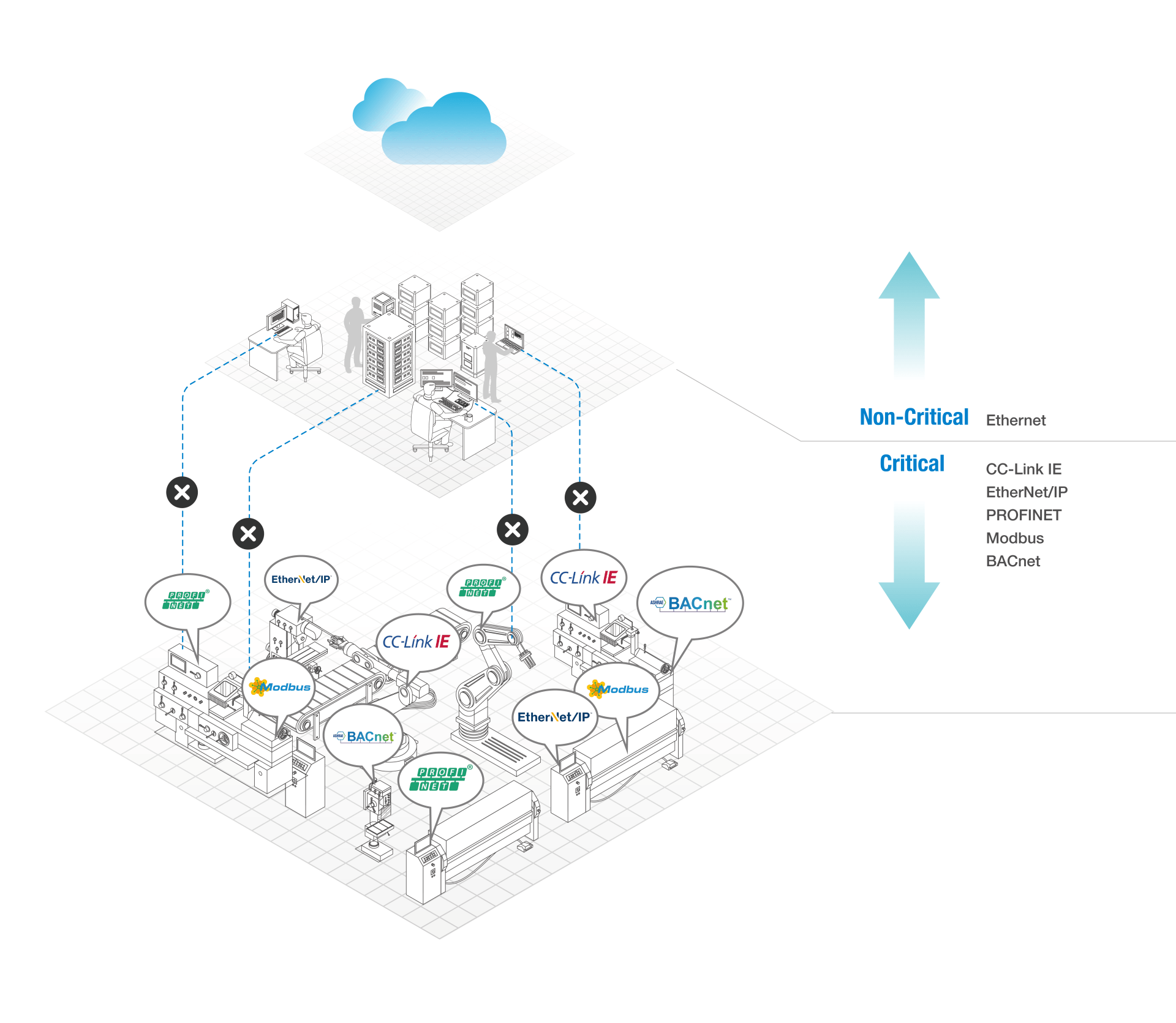
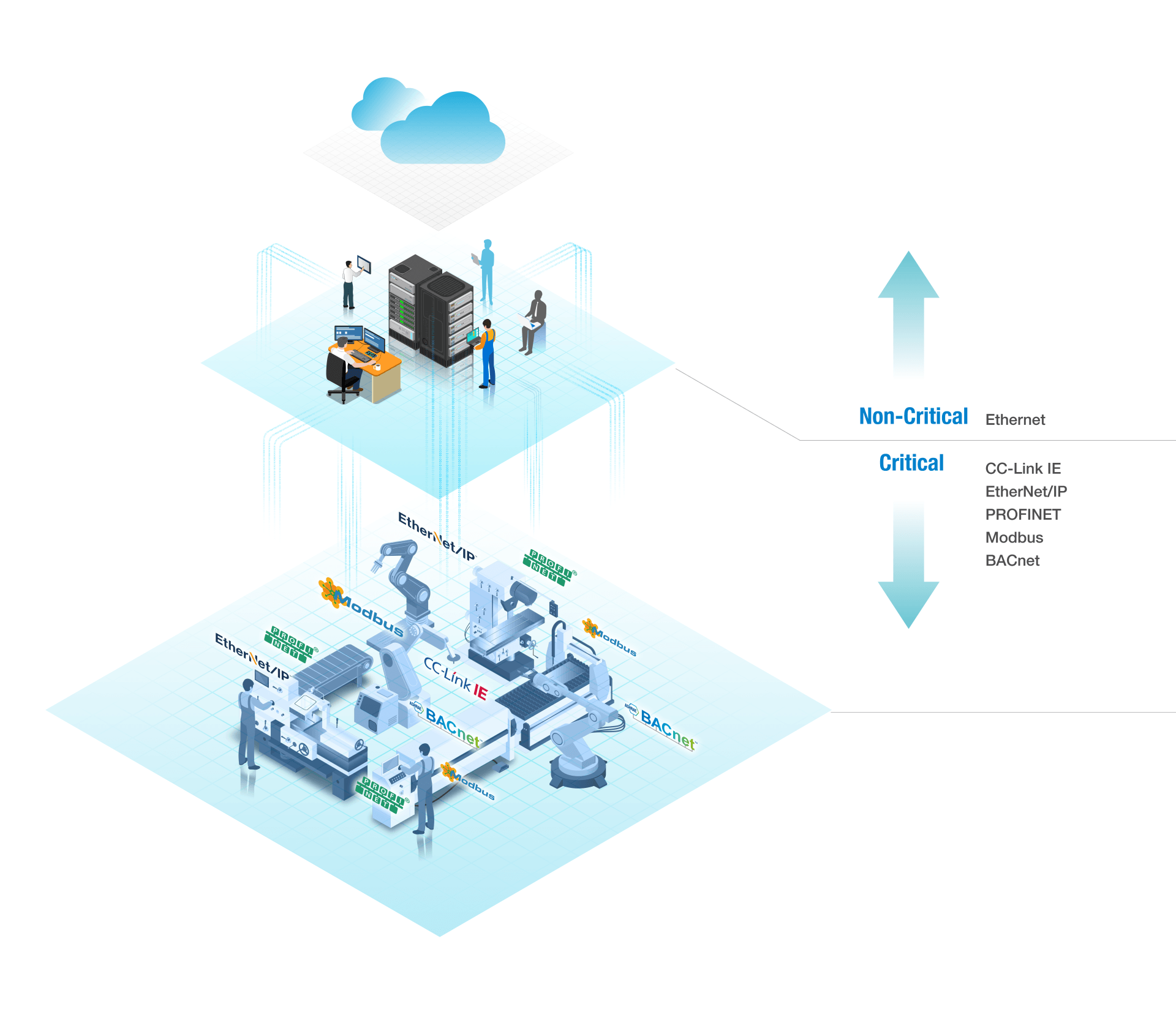
Actual Benefits of TSN to Users
1
With TSN, devices can communicate in real time without barriers, simplifying the configuration of systems, devices and applications, and increasing productivity by enabling machines to run together rather than independently. The vision of the IIoT is to achieve smooth communication between things, to integrate devices with the needs of the network, and to facilitate big data analysis and cloud management. The IIoT also provides a lot of support for machine learning and artificial intelligence.
2
The standardization technology carried out by TSN enables the structure to be standardized and flexibly extended without worrying about compatibility issues, thus resulting in higher flexibility. Previously different infrastructure technologies, protocols, and topologies are a stumbling block to network configuration. Standardized management of different modules and extension units can improve construction efficiency and reduce maintenance time, manpower and money costs.
3
TSN increases the amount of data available
and enables true real-time monitoring of production, eliminating the need for data collection, uploading and reporting at fixed time points. The performance indicators composed of the data are more accurate, detailed and real-time, conductive to a more complete and high-quality operation management.
4
TSN enables the devices on the production
site to successfully connect with the Ethernet and related infrastructure to obtain more network application services, including computing, classification, quality control, and image monitoring.
Application Field of TSN
TSN is a standard certified by industry organizations. A large number of organizations and enterprises at home and abroad are actively promoting the development of TSN technology and conducting interoperability testing, so as to jointly transform the ideal concept of the IIoT into practice. TSN consists of a number of IEEE standards, some of which are under development, and some of which are already widely applied by practitioners in the industry. From this, it can be inferred which fields are more suitable for the active deployment of TSN environment:
Advantech Time-Sensitive Networking Product Offerings
Industrial Managed TSN Switch
EKI-8510
The EKI-8510G-2FI is the next generation of industrial switch which supports real-time communication through Time Sensitive Networking (TSN) technology. Providing a means for determinism over Ethernet-based networks and guarantee the delivery for those critical real-time applications.
- 8 x Gigabit ports + 2 x Gigabit SFP ports
- IEEE 1588v2 PTP Precision Time Protocol
- Features IEEE 802.1AS Time Synchronization, IEEE 802.1Qbu Frame Preemption, IEEE 802.1Qbv Time Aware Shaper and IEEE 802.1CB Seamless Redundancy
- SFP socket for easy and flexible fiber expansion
- Management: SNMP v1/v2c/v3, WEB, Telnet, standard MIB
- NEMA TS2 for traffic control and EN 50121-4 approval for railway track sides
- Dual 12~48 VDC power input and 1 x relay output
Industrial TSN DIN-Rail Controller
UNO-148
UNO-148 is a new generation DIN-Rail Controller equipped with newest 11th Generation Intel® Core™ i Processor (up to 4.4GHz), supporting new solutions require high degree of coordination networked equipment. Also, UNO-148 can provide extra reliable and low latency communication requirement from eal-time application.
- 11th Generation Intel® Core™ i Processor with most 32GBx2 DDR4 memory (Default 8GB)
- IEEE 1588(PTPv2) enhances the accuracy of time synchronization
- IEEE 802.1AS(gPTP) featured best master clock selection, path delay measurement, and time distribution
- IEEE 802.1Qbv guarantee low transmission latency and timely delivery
- Support M.2 2280 NVMe SSD
- Modular design for optional iDoor extension
- Compliant with IEC 61010-1 safety requirements
Industrial TSN iDoor Module
PCM-24R1TP-BE
PCM-24R1TP-BE is the mPCIe extension module designed to address the needs of control systems with standard Ethernet technology, including standard time synchronization and deterministic network communication over standard Ethernet which allows operations networks to leverage the advantages of traditional Ethernet while meeting the timing and control needs of control and measurement applications.
- Supports Time Sensitive Network (TSN) (IEEE 1588/ 802.AS Rev, 802.1Qav, 802.1Qbv)
- Support PXE
- High speed Ethernet supports 10BASE-Te, 100BASE-TX, 1000BASE-T and 2500BASE-T 802.3
- Achieves time synchronization for device or system
- Real-time Ethernet with hardware based precision time protocol
Frequently Asked TSN Questions
Standard protocols
Device management and network security
Technology and operation details
Advantech Newsletter
Sign up for the latest intelligent connectivity product and event updates,
industry news, case studies, and more from Advantech.
Follow Advantech






